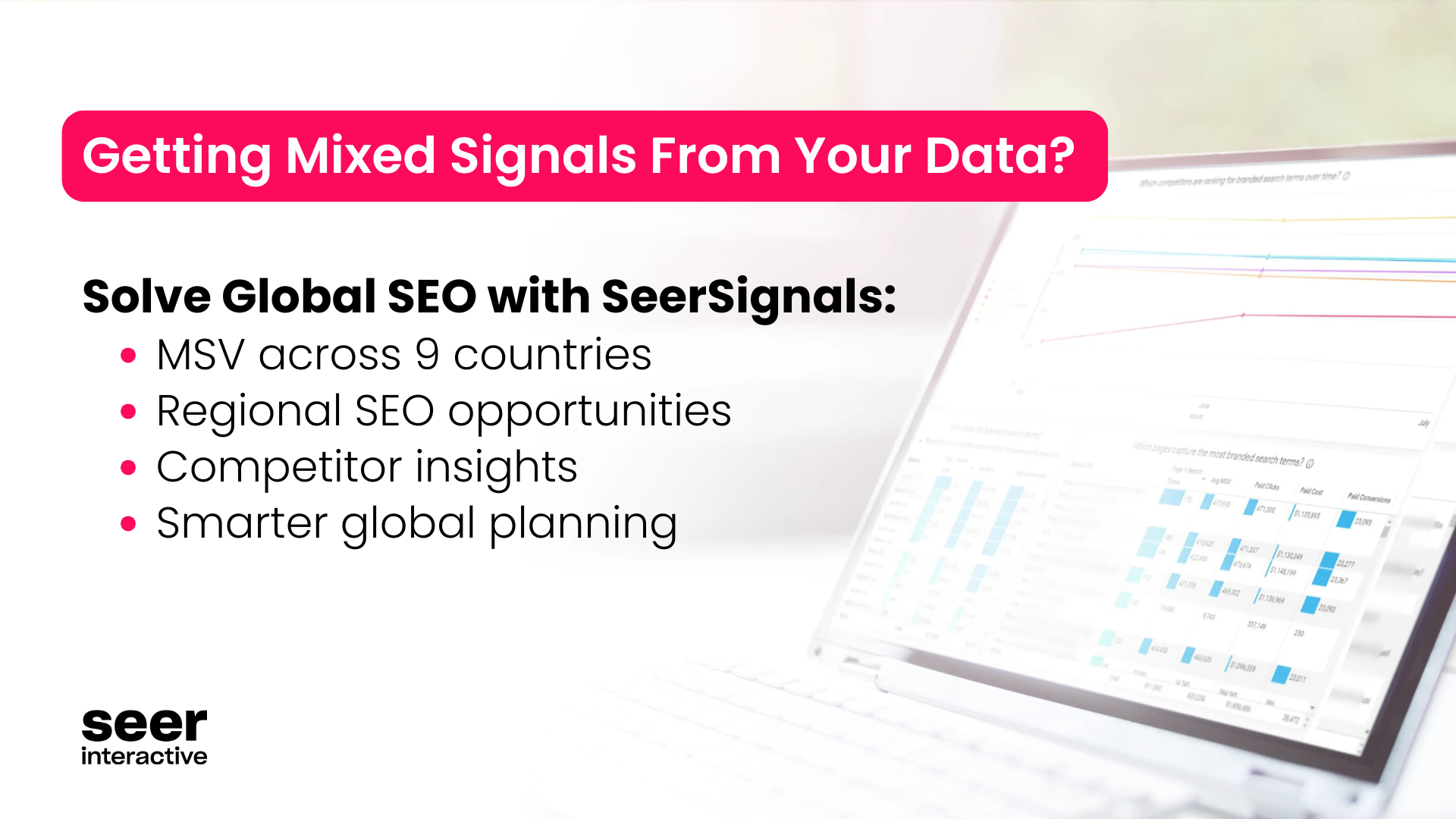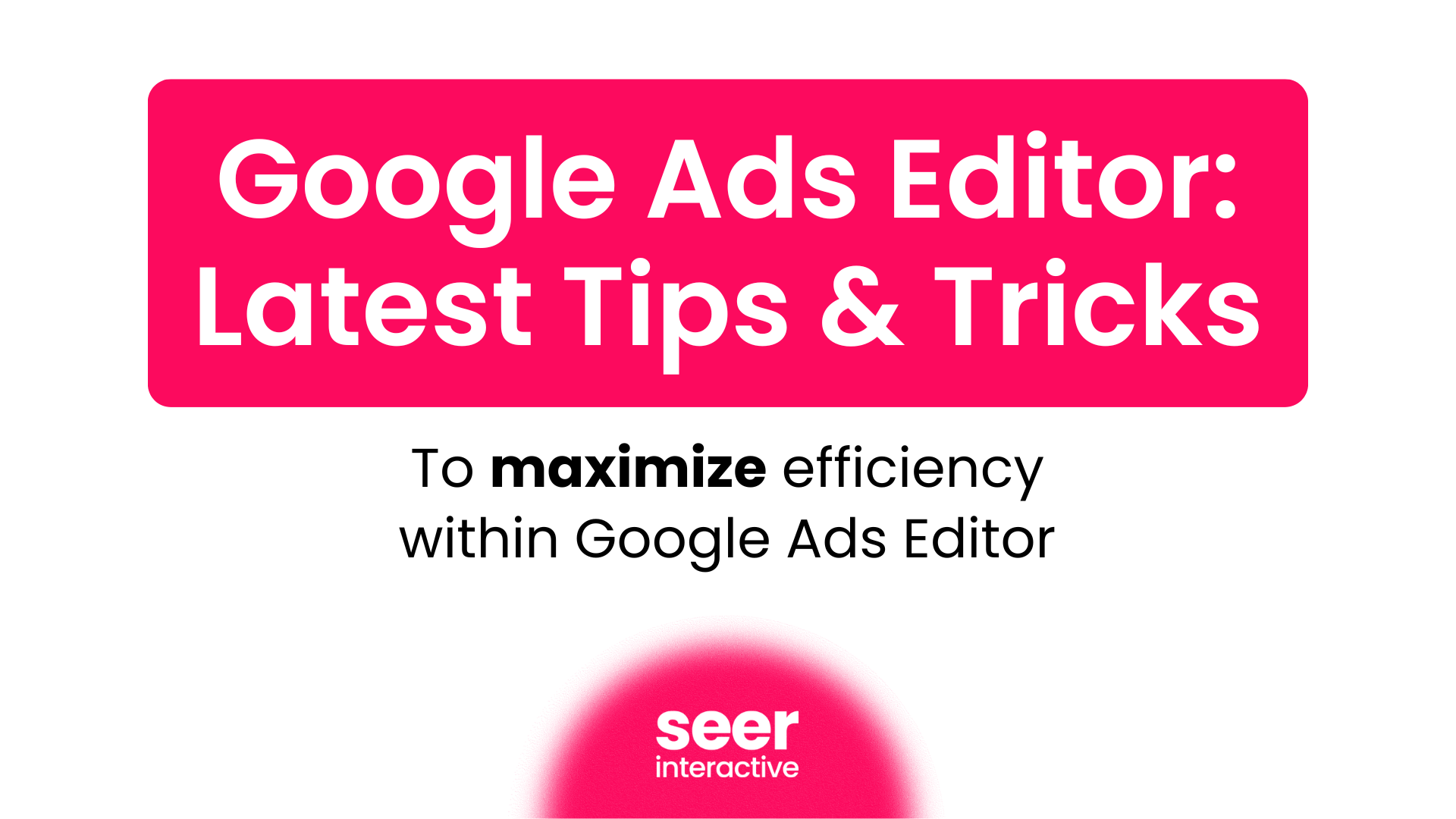Interpreting SEO in a Familiar Language - A Guide for Paid Practitioners to Approach Organic Content Optimization
I’ve been working on a training series for our PPC team to teach them more about SEO. Recently, the phrase “think about optimizing for organic search like optimizing for Quality Score” came out of my mouth, and I saw lightbulbs in my Paid team’s eyes go off. I’d never thought of it this way, but the more I explained using this analogy, the more and more sense it made.
Now, this comparison leaves out some crucial technological components to SEO. It doesn’t consider things like a sitemap and directives, or crawl budget (sounds like a foreign language, right?!) - but that’s okay! That’s why we still have SEO practitioners and tons of other resources to lean on. However, this framework can be used to think about how to approach content creation and refinement for a Paid practitioner who is taking on content. We’ll explore how to use the three main factors in quality score (Ad relevance, expected clickthrough rate, and landing page experience) to optimize content for organic search.
Optimizing Organic Content for Ad Relevance
When we optimize our paid keywords for ad relevance, we consider a few factors:
- Does this keyword make sense mapping to the landing page? Are the keyword, ad copy, and extensions the best answer/solution we can provide to a use that is searching this term?
- Does this keyword make sense to be grouped with other keywords in this specific ad group, sharing the same ad copy?
- Who is our audience? Is this the best solution for them?
- Do we use our keywords or close variations of it in our ad copy?
When optimizing for organic search, we ask the exact same questions - or a very close variation of them. The difference between our two practices is how we go about answering them.
- Does this keyword make sense mapping to THIS landing page? Is this the page with the best information about that topic? Is this page a comprehensive answer to all of the direct follow up questions they could have after their initial search, or does it at least link to it?
- Do the Page Title, Meta Description, and h1 do a good job showcasing that the user can find the information they’re seeking on this page?
For both paid and organic optimization, we can use data points like “people also ask” and “related searches” to make sure that the keyword/copy/landing page content are in fact a comprehensive answer for the user.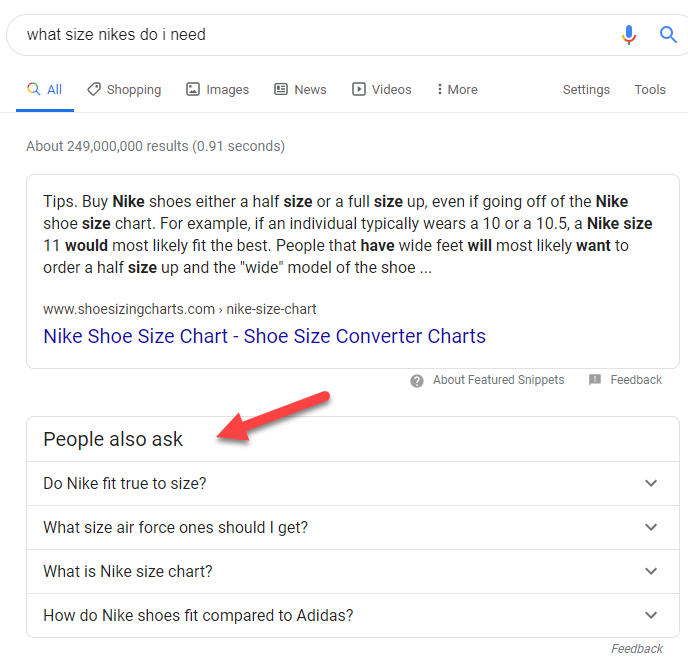
- Does this keyword make sense to be paired with the secondary and tertiary keywords we’re optimizing the page for?
- Since organic search works on semantic search (think: a much more refined version of close match variants that somewhat understands intent), it’s more important that we think about topically different keywords that should map to the same page.
- As an example, if you have a clothing sizing guide that lives all on one URL, we’d want to optimize it for “[Brand] shirt sizing guide” as well as “[Brand] shoe sizing guide” - and include a description of all the things this page can help a user solve in the page title and meta description. Nike does a great job of this with their index of sizing guides.

- With our organic hats on, we ask the exact same questions. We want to make sure that we understand the person behind the search and what frame of mind they’re in, and the intent behind their search as we optimize our Page Title and Meta Description. Using our clothing example, if we have a sizing guide for buyers, we wouldn’t want to say “Read about how to recommend the right size to your customers” if the page isn’t aimed at clothing store owners, but at end users.
Layer on observation audiences in relevant PPC ad groups to get a better understanding of the audience interacting with these keywords before optimizing organically.
- Do we use our keywords or close variations in our meta data (Page Title, Meta Description, and Header tags)?
Test messaging in PPC ad copy and use the copy variation with the highest CTR in your organic meta descriptions.
| Paid Tactic | Related Organic Question |
| Landing page selection | Does this keyword make sense mapping to THIS landing page? Is this the page with the best information about that topic? Is this page a comprehensive answer to all of the direct follow up questions they could have after their initial search, or does it at least link to it? |
| Detailed ad creative | Do the Page Title, Meta Description, and h1 do a good job showcasing that the user can find the information they’re seeking on this page? |
| Grouping related keywords in ad groups | Does this keyword make sense to be paired with the secondary and tertiary keywords we’re optimizing the page for? |
| Audience targeting | Who is our audience? Is this the best solution for them with their current intent? |
| Including keywords in ad copy | Do we use our keywords or close variations in our meta data (Page Title, Meta Description, and Header tags) |
Optimizing Organic Content for Landing Page Experience
When optimizing landing pages for organic search, there are a handful more factors to consider for SEO. However, the same initial factors apply:
![]() 1. Message matching - does your ad copy/title tag & meta description match the content and experience delivered once the user clicks through? When you write a title tag, meta description, and even ad copy, you’re setting an expectation with users of what they’ll find on your site. In order to keep that promise, your content has to meet their expectations, otherwise, they’ll go back to the SERP and look elsewhere.
1. Message matching - does your ad copy/title tag & meta description match the content and experience delivered once the user clicks through? When you write a title tag, meta description, and even ad copy, you’re setting an expectation with users of what they’ll find on your site. In order to keep that promise, your content has to meet their expectations, otherwise, they’ll go back to the SERP and look elsewhere.
![]() 2. Page structure makes it easy to obtain information - While on paid, we may be dictating the structure of a landing page to drive a lead or initiate a sales cycle in which the user can request more information, in SEO, we aim to structure the content on a page so that it is easily digestible, and the user can see at a glance where on the page their answer will be. We do this using Heading tags, which leverage topical keywords to give users a heads up which part of the content is about their query.
2. Page structure makes it easy to obtain information - While on paid, we may be dictating the structure of a landing page to drive a lead or initiate a sales cycle in which the user can request more information, in SEO, we aim to structure the content on a page so that it is easily digestible, and the user can see at a glance where on the page their answer will be. We do this using Heading tags, which leverage topical keywords to give users a heads up which part of the content is about their query.
![]() 3. Keep your promise - In both SEO and PPC, you must offer users the opportunity to fulfill the CTA you urged them to complete in your ad copy or meta description. If you encourage them to “browse the catalog,” they should be taken to a page that they can easily browse. If your meta description says they’ll learn about your new eco-friendly line of sandals, there better be information on the page about the materials, the manufacturing, and any eco-standards that your line meets.
3. Keep your promise - In both SEO and PPC, you must offer users the opportunity to fulfill the CTA you urged them to complete in your ad copy or meta description. If you encourage them to “browse the catalog,” they should be taken to a page that they can easily browse. If your meta description says they’ll learn about your new eco-friendly line of sandals, there better be information on the page about the materials, the manufacturing, and any eco-standards that your line meets.
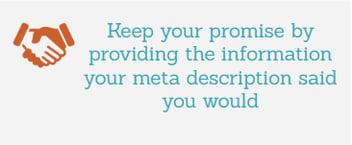
![]() 4. Accessibility to users and bots - The same way that your ads will get disapproved if your landing page 404s, and your quality score will suffer if your landing page 301s, your organic experience will suffer (and thereby hurt your rankings and performance) if users click through to a page that is broken, or takes them to one other than the page you “promised” them in the SERP. Additionally, 404s and multiple-301s make it difficult for Google to crawl your site (think: navigate around and understand all the content available to them) and understand exactly what you have to offer users, so you’ll want to work with your technical friends to resolve any redirect chains or 404s.
4. Accessibility to users and bots - The same way that your ads will get disapproved if your landing page 404s, and your quality score will suffer if your landing page 301s, your organic experience will suffer (and thereby hurt your rankings and performance) if users click through to a page that is broken, or takes them to one other than the page you “promised” them in the SERP. Additionally, 404s and multiple-301s make it difficult for Google to crawl your site (think: navigate around and understand all the content available to them) and understand exactly what you have to offer users, so you’ll want to work with your technical friends to resolve any redirect chains or 404s.
![]() 5. Page speed, page speed, page speed - This is the main reason that 301s hurt your quality score: they slow down your page load time. The same applies organically. If a user requests a specific page in their browser and has to wait for the redirect to go through (even in milliseconds), it slows down their experience.
5. Page speed, page speed, page speed - This is the main reason that 301s hurt your quality score: they slow down your page load time. The same applies organically. If a user requests a specific page in their browser and has to wait for the redirect to go through (even in milliseconds), it slows down their experience.
This is an increasingly important factor organically as Google has moved to a mobile-first index. This, very simply put, means that they crawl and index your content with mobile experience top of mind, and that factors like site speed and mobile-responsiveness impact your organic performance. How do you fix this? Start with this page speed test, and talk to your developer friends. Many of these are simple fixes!
Optimizing Organic Content with Expected Click-Through Rate in Mind
In ads, expected clickthrough rate is a measure of “how likely are folks to click on your ad based on your past performance?” It’s all about what you’ve done historically - right and wrong. While we don’t get a metric like this for SEO, the historic authority and quality of our site impacts how well any new content you publish can perform.
If your site has had manual Google penalties (where they demote your rankings as a punitive measure for black-hat, malicious, or negligent SEO tactics) that have been fixed, or doesn’t have a long-standing history (if it’s a pretty new domain), the main factor that will help this is time. While you nor I can control time, what we can control is that we start building authority on topics as soon as possible, so that that authority can build up over time.
One way to do this is to show Google (and users) that you have other information on the topic, that is related and can further help the user find answers. You do this with internal links in your content. But how do you know what you should link to? Use Google!
There’s a nifty tool called “site search” that allows you to see which other pages on your site Google deems relevant for a certain keyword. Enter the following into Google:
site:yourdomain.com “your target keyword”
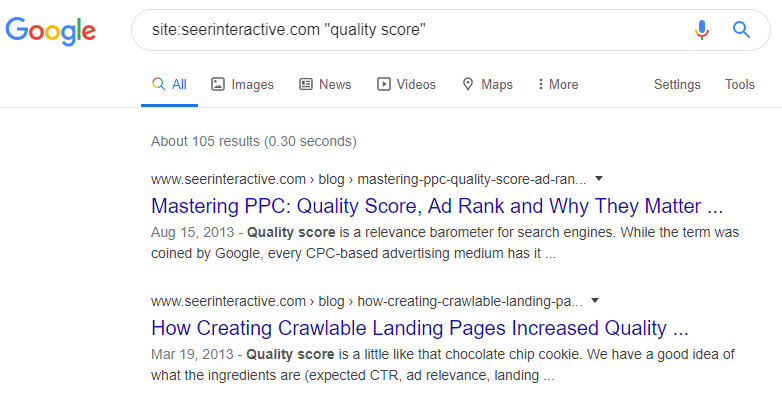
Then, you’ll see a list of pages on your site that Google deems relevant to this topic. Look through them to decide if it makes sense, and would add value to users, for you to include links to one or two of these pages in your content. You’ll want to make sure that your anchor text (the words you link from) include some variation of your keyword, but done in a way that is natural in context and is genuinely helpful for the user.
Again, this can’t change the impact of your historical domain authority, but they say the best time to start anything time-sensitive is now!
Curious about more ways you can use your paid chops to influence organic strategy? Learn how to join your paid and organic data together on our YouTube Channel.

